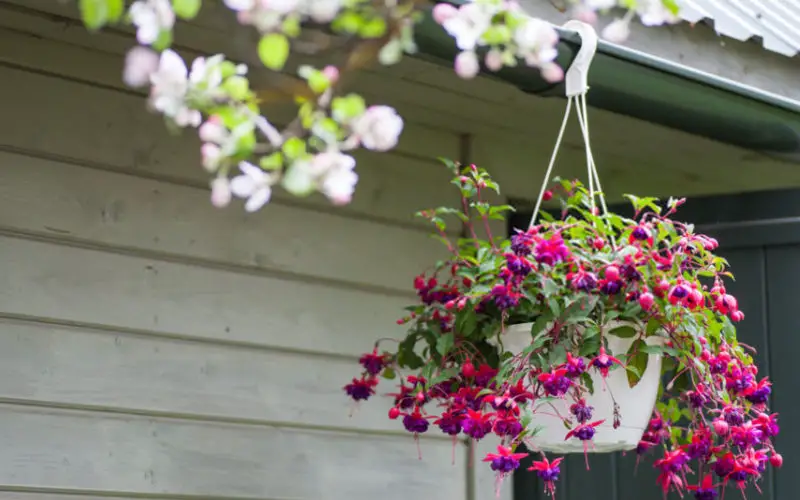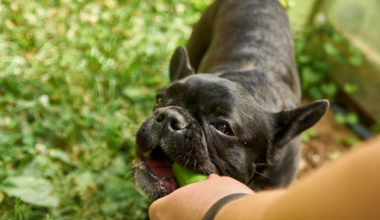If the plant has now a major place in the trendy interiors, it emancipates itself from its ordinary place to take height. Pedestal, hanging planter, planter, furniture for personal use, all means are good to grapple a few centimeters and become, no longer a simple plant, but a plant work exposed.
Contents
Should you water your plant in height without lowering the pot?
If you water your plant while it is still hanging, the water will cascade down to the soil inside, because the water will pass through the soil without really moistening it at first.
To water your hanging plant, it is best to take your hanging plant to the sink or bathtub and let it soak in a little water before lifting the pot to let the water run off.
Only then can you put the hanging plant back in its usual place… without fearing that the ground will flood a few moments later!
How to water a plant hanging in the air?
1. Lower the plant and water it
The soil of hanging plants is usually quite small: it dries out quite quickly! It is therefore necessary to water it much more regularly. If your hanging plant is easy to take down, you can remove it from its support, water it in the kitchen or bathroom sink, let it drain and then put it back up.
2. Use a water pipette
We are talking about the same pipettes that are used in a scientific environment, it is the ideal solution for small pots, and plants that do not appreciate having wet leaves!
3. Use a water dispenser
In the same way as the pipette which will diffuse water little by little, it is possible to make your own water dispenser with a bottle, here is how to do it:
Take a used plastic bottle and make several holes in it with a heated needle or a screwdriver. Then, bury it, leaving the neck above the ground. Fill it with water and voilà!
4. Put ice cubes in the jar
By adopting this unusual method, you will allow your plant to receive a balanced water supply. Slowly but surely, your ice cube will diffuse the water progressively inside the pot and give the roots time to absorb the amount of water they need to feel good.
5. Use a telescopic hose
If your pots are suspended high up in the garden, it can be very interesting to use a telescopic watering hose. The watering will be done in the blink of an eye, without having to use a ladder or any other equipment.
6. Buy a pot with a water reserve
Usually made of plastic, the planter or pot with water reserve has a double bottom that serves as a reservoir. This type of pot comes in all sorts of sizes and shapes.
Whatever the pot, the principle remains the same: the bottom is separated from the soil by a perforated grid that allows to store a certain amount of water. The water will flow up to the plant by capillary action, providing constant humidity while avoiding drowning the roots (which can happen if you water too much and the water stagnates under the plant).
A fill tube (or opening in the pot wall) is used to pour water directly into the reservoir. Make sure that the tube has a gauge that will tell you how much water is in the reservoir.
7. Use a drip kit
Simple to install, programmable, drip irrigation provides just the right amount of water for garden plants and species grown in pots, planters or greenhouses. The network is made up of pipes, connectors and specialized sprinklers: sprinklers, misters, drippers, irrigators.
This equipment is completed with junctions, manholes, water intakes to be buried, valves… There are kits ready to install, adapted to a precise number of plants or pots. You can also compose your drip irrigation system à la carte. In both cases, it is possible to change the installation according to your needs. It is practical, comfortable and very economical to use!
8. Use wool soaked in water
This trick, also called “wicking”, is particularly popular indoors. You’ll start by placing a container of water over your plant.
You can place it on a chair, for example, while your plants are on the ground. You will then connect a thread of wool from the bottom of your container to the heart of the substrate of your plants. By capillary action, your plants will receive a regular supply of water. Please make sure that you put the wool deep enough in your substrate so that all the roots benefit from the water supply.
9. Use a water bubble
Glass watering bubbles are ideal for taking care of plants in high places, or when you go away for the weekend or on vacation. They are very easy to use, just fill them with water, turn them upside down and plant them in the ground. Recommended for potted plants, they generally hold 0.25 gallons each.









